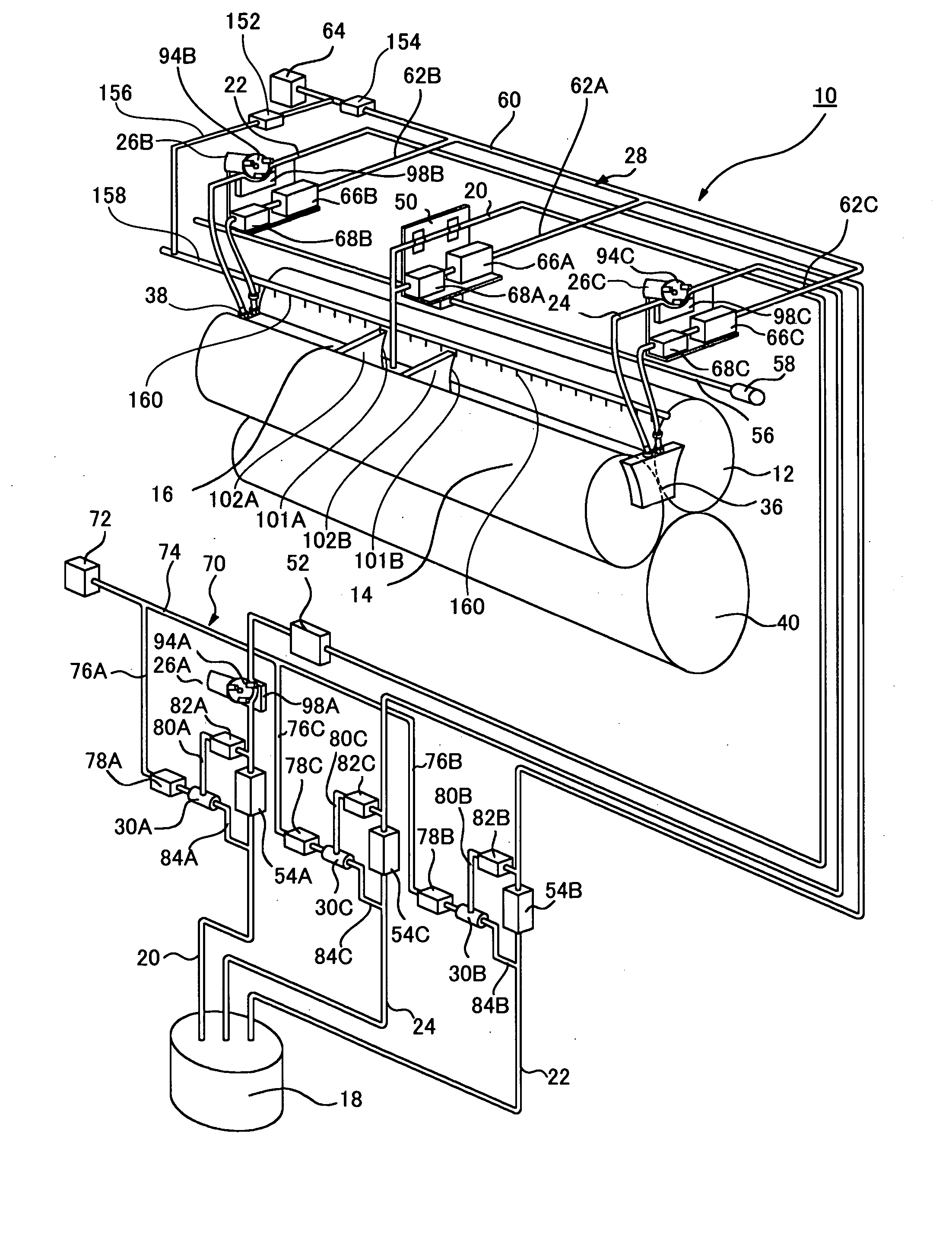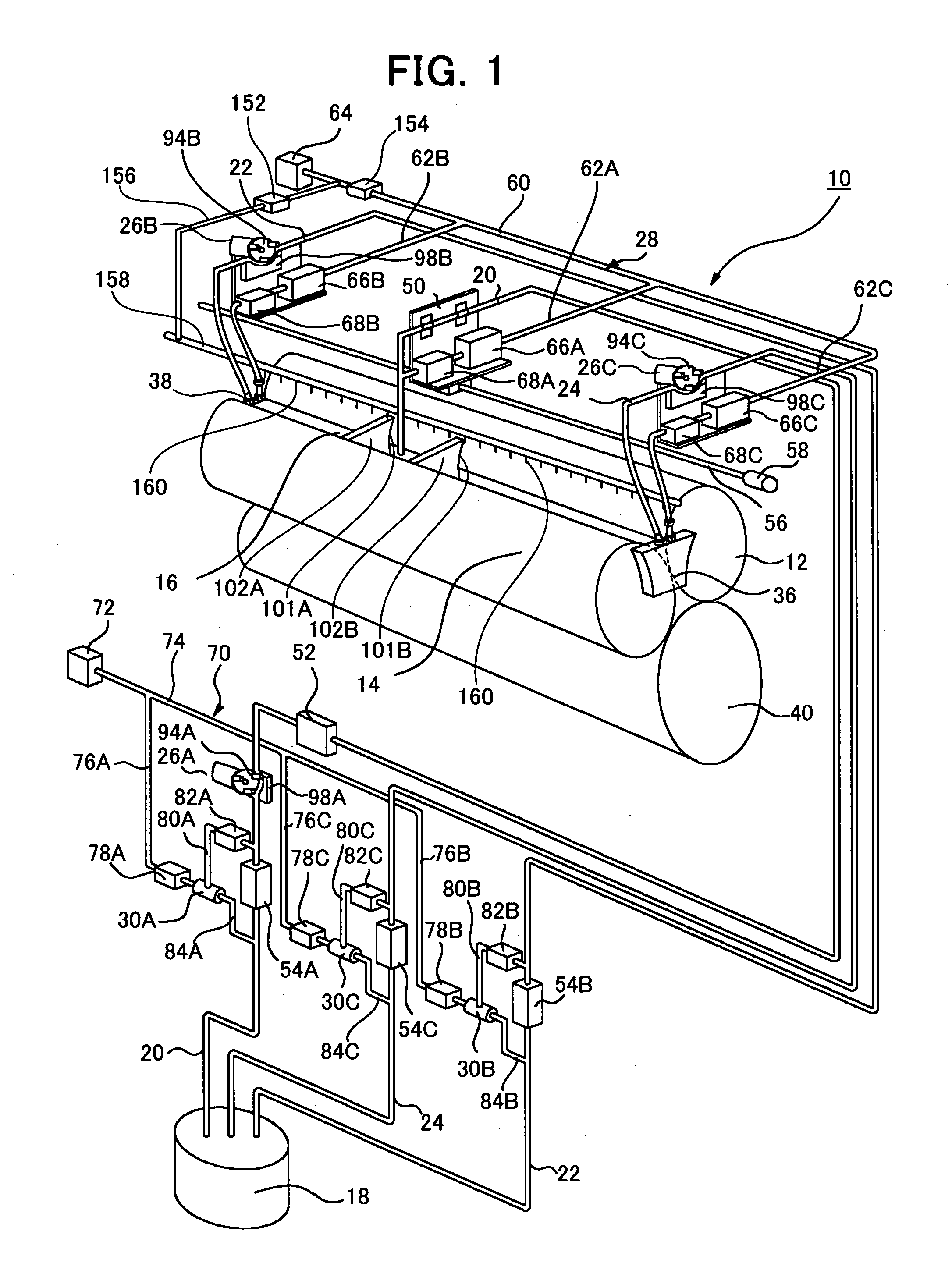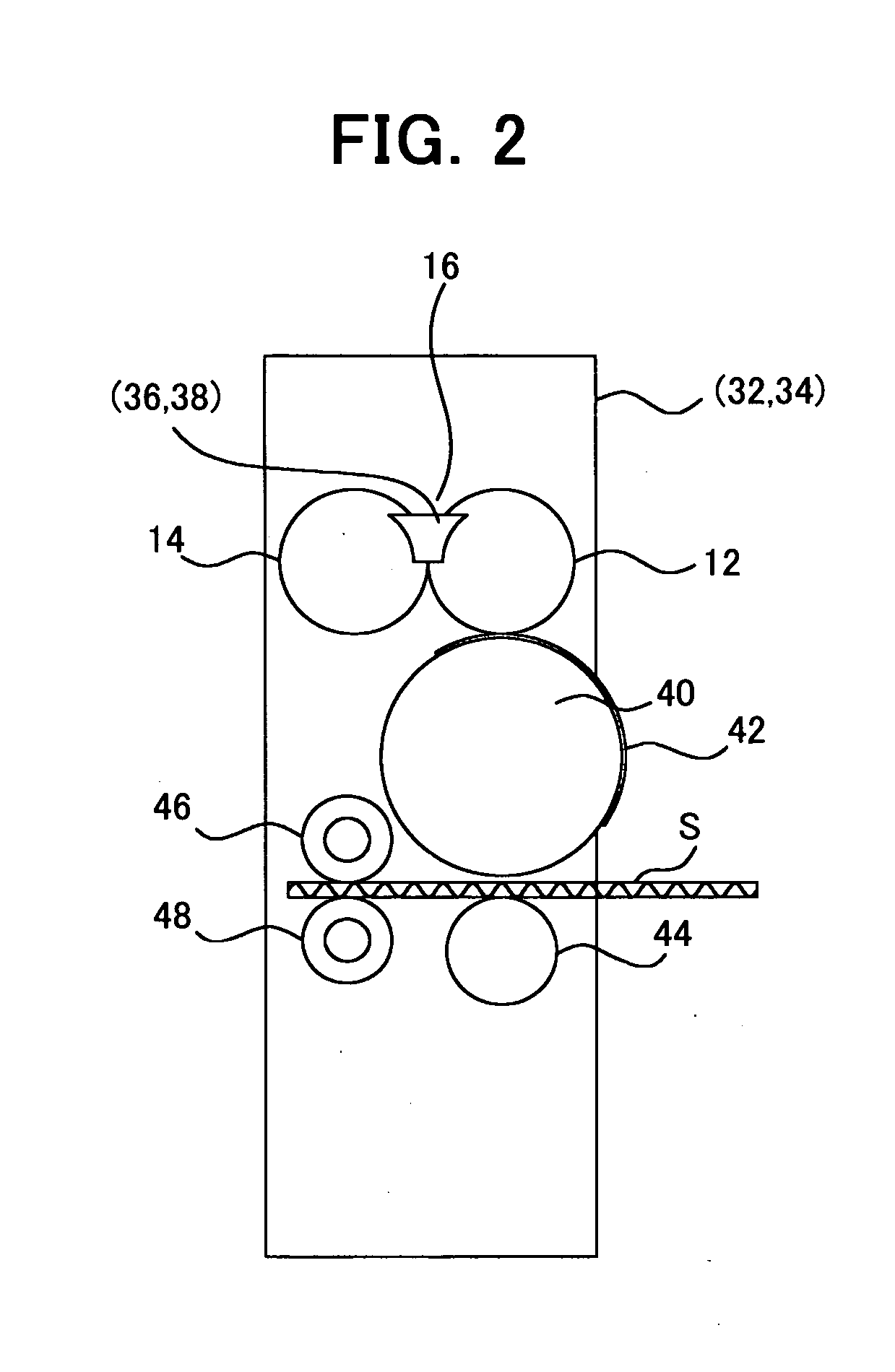Flexographic ink printing machine
a printing machine and flexographic technology, applied in printing presses, rotary letterpress machines, printing, etc., can solve the problems of difficult to obtain highly efficient supply and recovery of ink, halt the transferring operation of ink recovery tubings, and difficult to print machines, so as to prevent wear and tear, prolong the life of printing machines, and improve the adhesion condition of ink
- Summary
- Abstract
- Description
- Claims
- Application Information
AI Technical Summary
Benefits of technology
Problems solved by technology
Method used
Image
Examples
Embodiment Construction
[0040] The flexographic ink printing machine of the preferred embodiment of the present invention is used for printing corrugated boards with flexographic ink.
[0041]FIG. 1 is a perspective view showing a printing machine of the preferred embodiment of the present invention; FIG. 2 is a side elevational view showing a printing section of the printing machine illustrated in FIG. 1; FIG. 3 is a piping diagram showing relationships of various tubings and elements of the printing machine illustrated in FIG. 1; FIG. 4 is a side elevational view showing a pair of squeezing blades of the printing machine illustrated in FIG. 1; FIGS. 5A and B are a front view and a side view showing dam plates of the printing machine illustrated in FIG. 1; FIG. 6 is a schematic front view showing a tubing pump; and FIG. 7 is a schematic side view showing the tubing pump.
[0042] As can be seen in FIG. 1, the printing machine 10 includes an ink reservoir 16 formed by a pair of rollers 12 and 14, an ink supply...
PUM
 Login to View More
Login to View More Abstract
Description
Claims
Application Information
 Login to View More
Login to View More - R&D
- Intellectual Property
- Life Sciences
- Materials
- Tech Scout
- Unparalleled Data Quality
- Higher Quality Content
- 60% Fewer Hallucinations
Browse by: Latest US Patents, China's latest patents, Technical Efficacy Thesaurus, Application Domain, Technology Topic, Popular Technical Reports.
© 2025 PatSnap. All rights reserved.Legal|Privacy policy|Modern Slavery Act Transparency Statement|Sitemap|About US| Contact US: help@patsnap.com



